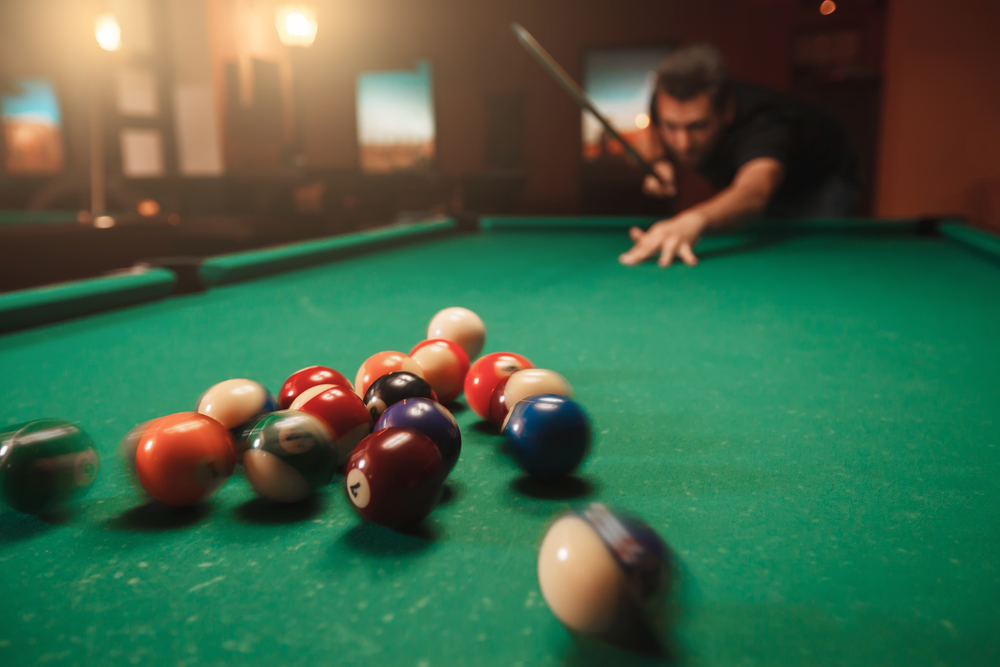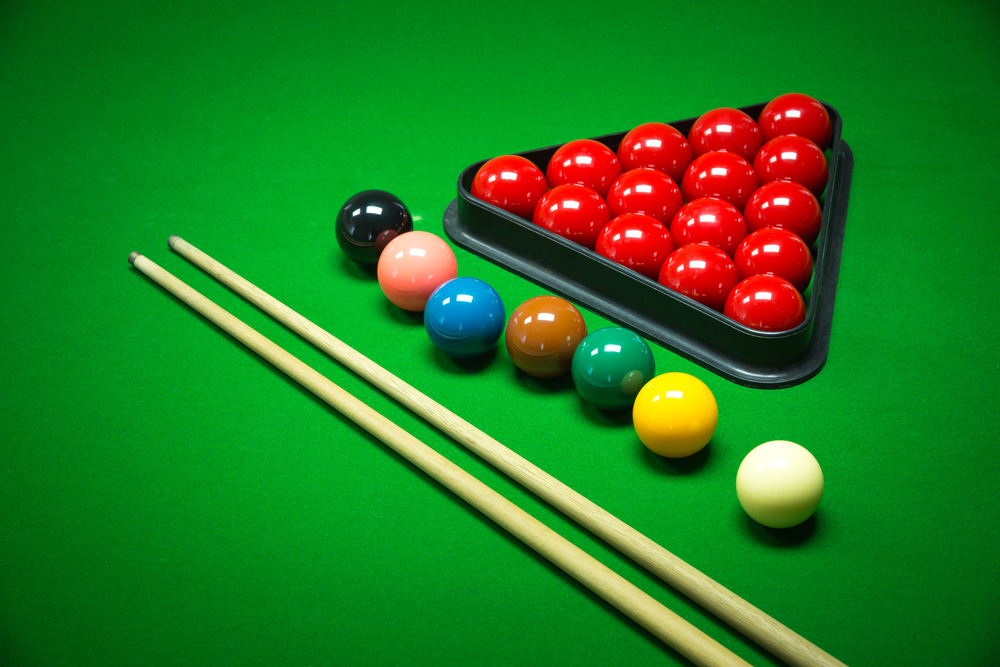Billiards vs Pool vs Snooker: Know the differences
Game Types: What Is The Difference Between Billiards, Pool & Snooker?
The terms “billiards” and “pool” are often used as if they were the same thing, but they aren’t. If you want to know the difference between billiards vs pool vs snooker, then you might as well sit back, relax, and read here about the evolution of these terms that have been used to describe an interesting variety of games that are played with tables and cue sticks. Here we are going to tell you about the basics of all this relevant information any pool table player should know if they're willing to learn about the billiards world and its game differences

Brief History of billiards and pool
Billiards, in its very beginning—during the 15th century— was a lawn game that was similar to croquet, and it was played in Northern Europe, mainly by royalty and other nobles, but since then, it has now evolved to the point that billiards have more game styles.
After being a game played outdoors, the billiards experience moved indoors to a wooden table with a simple border around the edges and a green cloth over the table, why? to simulate grass, or at least that’s what many people say. The term “billiard” began to gain power in this time and it is derived from the French word billiart (wooden sticks) and bille (ball).
As said before, tables had flat walls for rails only to prevent the balls from falling off, but when players discovered that balls could bounce off the rail they started to aim at the river banks, or “banks,” which were the rails—as they resembled river banks—so when the ball rebounded from a cushion as part of the shot, then it was called a “bank shot.”
Cue sticks were first developed in the late 1600s. When the ball lay near a rail, the mace was helpful thanks to its large head, so players would turn the mace around and use its handle to strike, said handle was called “queue” —tail— and then evolved to the word “cue.”
And last, but not least, “pool” means a collective bet or ante, but back in the 19th century, a poolroom was a betting parlor for horse racing so pool tables were installed for patrons to pass the time between races. It was because of this that the word “pool” became connected in the public mind, and was associated later with billiards.
Carom billiards and pocket billiards
These are both cue sports, which means that they’re included in the general class of games that are played with sticks called cues, used to strike billiard balls and move them around a billiard table that’s bounded by rubber cushions, which are attached to the bounding rails of the table. The Carom or carambola billiards are often simply called “billiards,” and is when the table is bounded —as mentioned before— by cushions, and in which, only three balls are used.
Pocket billiards or "pool"
This is the most well-known form of playing at an international level. This form of billiards is usually equipped with sixteen balls—a cue ball and fifteen object balls—all of them played on a pool table that has six pockets built into the rails that split the cushions. On the other hand, the pockets are located one at each corner, and one in the center of each long rails, a formation that provides targets and obstacles for the balls.
These two billiard games have turned into a wide batch of other specific games with their own atypical rules, which also require other types of equipment. Among which you might find the aforementioned Carom balls on pocket tables and snooker.
Snooker
Pocketed tables are used in snooker. In America, it’s on ten-foot tables, while in England, it’s on massive twelve-foot tables. Snooker is played with 15 pink numberless balls, 6 numbered object balls, and 1 cue ball, while Pool is played on a table with 6 pockets, with 9 to 15 object balls, and in addition, a cue ball.
What are the differences between balls, tables, and rules?
Balls
The number of balls used is the main difference in billiards, pool, and snooker games.
Balls in snooker
A total of twenty-two balls of 2 1/16 inches in diameter are used in snooker; a white ball, also called the striker ball, fifteen red balls and one each of yellow, brown, blue, pink, black, and green.

Balls in billiards
On the other hand, if you’re playing billiards, then you’re going to need three balls that are 2 7/16 inch in diameter—white, yellow, and red—where the white and yellow one act as the striker ball.
Balls in pool
In the case of pool games, the number of balls might change depending on the direction given to the game, but mostly, pool includes a full set of sixteen balls of 2 1/ 4 inches in diameter, where eight of them are color numbered from one to eight, and the other seven balls have a stripe of color and are numbered from nine to fifteen; finally there’s a white cue ball.
Tables
Carom billiards and pool games can be played on either a seven-foot table or an eight-foot table, and even a nine-foot table, which is known as a pro or a tournament table. Carom billiards tables do not have pockets, but pool tables and those used for snooker do. English snooker tables, though, are twelve-foot tables; in other words, massive, while American tables are ten-foot tables.
Rules
The rules of all the variety of games are complex, but we can approach them from a simple basis and main objectives.
Rules for Carom billiards
When playing Carom Billiards games, the main goal is to score points—called “counts”—by bouncing the cue ball off of the other two balls that are on the table.
Rules for snooker
Snooker, on the other hand, is a game organized into frames, which the player can win one by one by scoring the most points using the cue ball to pocket only the red and colored balls. Red balls are worth one point, the yellow two points, the green three points, the brown four-point, the blue five points, the pink six points, and the black seven points. If for example, a red ball is pocketed, then the following ball must be a colored ball, and then, in turn, be followed by a red ball. When the wrong ball is pocketed, then it’s called a “foul,” and the player gets no points for pocketing it.
Rules for pool
Pool, or at least in straight pool, players score points by shooting the balls into the table’s pockets. Before the game starts, all players agree to reach a specific number of points so they can be declared the winner. Players are able to pocket any ball on the table and each awards one point to the player. In straight pool, for the shot to be successful, the intended ball must reach the intended pocket.
Billiards equipment

Cloth
The pool table cloth is also called pool table felt, and is composed of a combination of wool and usually nylon. Worsted cloth, on the other hand, is the cloth with the best quality, and you can’t really feel it as the wool goes through a specific process that eliminates all the fuzziness on the surface. Basically, “fabric” used for this is made of quarried slate, that is covered with cloth, usually of tightly-woven worsted wool, and surrounded by vulcanized rubber cushions.
Racks
Racks are often called triangles and are an iconic piece of equipment that’s used for placing billiards balls in their starting positions before the pocket billiards game begins; however, the world rack can also be used as a verb to describe the act of positioning the billiards balls in said formation. These triangles can be made from wood, plastic, or metal. In addition to this, a modern variation called template rack is also used, and it’s made from a thin material that contains precision cut-outs to hold balls in place.
Triangular racks are used for:
-
eight-ball,
-
straight pool,
-
one-pocket,
-
bank pool,
-
snooker,
-
And many other games, while diamond-shaped frames are sometimes used for the game of nine-ball.
Cues
Cue sticks have three variations, billiards cue, pool cue, and snooker cue, and it’s an essential item to the games of pool, carom billiards, and snooker. Cues are tapered sticks that are about 57-59 inches long and weigh between 16 and 21 ounces and are used to strike a ball—the cue ball. Cues made for playing carom have a shorter range, but often, the cue length will depend on the height and arm length of the player. Cues are mainly made from wood, but you can also find them covered or bonded with materials such as graphite or carbon fiber.
Billiards or pool, which is most popular?
Popularity of billiards
Pocket billiards are popular in countries such as Canada, Australia, Taiwan, the Philippines, Ireland, and China.
Popularity of pool
Pool reigns in the U.S, as it a highly popular game that helps people socialize in a casual way; this is why almost every bar in the country has pool halls, specifically to play 8-ball pool, as other versions of the game are mostly unknown. Even so, when people play 9-ball pool, they get to play it in a more competitive way.
Popularity of snooker
Snooker can be even more popular in the UK than pool games in the US. In the UK is more common to play on a snooker table; pool is constantly played too, but the rules vary, and they’re more driven to use red and yellow balls, rather than stripes and spots. Snooker gained popularity back in the 1980s, and it’s still regularly broadcast live on BBC TV, getting a considerable and reliable amount of million viewers.



